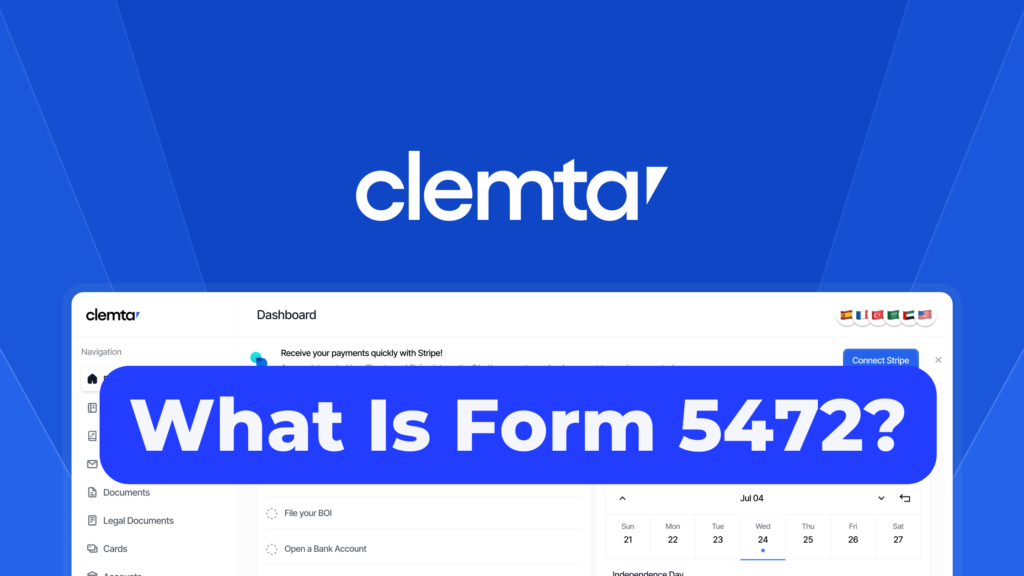Taxation in the US is quite sophisticated for entrepreneurs; especially if you are currently resident in another country and not familiar with these taxes. The questions arise when people do business in the US for the first time. People often confuse about what to pay exactly, how to pay and when to pay. In this manual, we will try to get answers to those questions. Now, let us start with the answers.
Table of Contents:
Federal Level Taxes
State Level Taxes
Federal Level Taxes
Value Added Tax (“VAT”):
Value Added Tax (“VAT”) is a type of tax often confused with the sales tax. Sales tax and VAT differ with this principle: “Sales tax only applies in the final consumption by the consumer”. So, the consumer is the one who pays the sales tax. Comparing with the sales tax, VAT is collected on each step of the production & supply chain.
Since VAT is meant to be neutral for business, they can deduct the VAT they are charged by other businesses against the VAT they charge on their sales. VAT is usually included in the price tags which we see in everyday life. So, once you buy a good or service, the amount which you pay also includes the VAT. But, this amount is not for the seller’s wallet. The seller has to pay this amount of VAT on your behalf. This process may also be seen in sales & purchases among the merchants in the supply chain.
So, basically as a seller, you include the amount of VAT in your price. Then when you sold this good or service to a buyer, you have to pay this amount to the government afterward.
Who will pay?
The seller of a good or service.
What is current the rate?
0%. Currently, there is no federal VAT in the US.
Federal Personal Income Taxation:
This type of tax applies to all citizens or residents that have income. Personal Income Tax may be collected through two methods: withholding or self-filing.
What withholding refers to is your employer pays the amount of personal income tax on behalf of you. This amount subject to the tax will be deducted from your salary.
The other method is you calculate and pay your personal income tax.
The federal personal income tax has seven tax rates range between 10%-37%. As the taxable amount increases, the tax rate also increases. These rates also differ by your marital status while filing. You can look at the basic tax table for a single person below:
| Taxable Income | Rate |
| $0 – 9,875 | 10% |
| $9,875 – $40,125 | 12% |
| $40,125 – $85,525 | 22% |
| $85,525 – $163,300 | 24% |
| $163,300 – $207,350 | 32% |
| $207,350 – $518,400 | 35% |
| $518,400 and over | 37& |
The full tax table may be reached via this document of IRS.
Who will pay?
The US citizens or residents with taxable income.
When it has to be paid?
The deadline is usually April 15th. For the tax year 2020 tax returns, this date has been extended to May 17th.
How will it be paid?
Form W-4 for the withholding by your employer
Form 1040-ES for the estimation and Form 1040 for the self-filing.
What is the current rate?
It ranges between 10%-37%.
Federal Corporate Taxation:
Federal Corporate Tax, (in other words: Federal Corporate Income Tax) applies to the types of corporations in the US. This is an income tax for corporations regarding their corporate earnings. Since it is a federal and flat-rate tax, every corporation in the US pays the same ratio or their reported earnings. In other words, all income of the corporation is subject to the same federal tax rate. Do not forget that a corporation’s all earnings are not subject to this tax. Corporations can also deduct their operating expenses from their revenues. Usually, corporations estimate their yearly taxable income and pay taxes on this amount quarterly.
Comparing with the C-Corp, some corporations like S-Corp are taxed at the shareholder level. In this taxation method, taxes are collected by shareholders’ personal filings.
Who will pay?
C-Corporations
When it has to be paid?
Corporations using the calendar year as their tax year, the quarterly payments on estimated tax amounts are due April 15, June 15, September 15, and December 15.
How will it be paid?
Form 1120-W for the tax estimation and form Form 1120 for the filing.
What is the current rate?
21%.
State Level Taxes
Sales Tax:
Sales tax and VAT differ with this principle: “Sales tax only applies in the final consumption by the consumer”. So, the consumer is the one who actually pays the sales tax. Comparing with the VAT, sales tax is collected on the step of final consumption. So, the consumers usually pay the price tag as sales tax included. Each state’s sales tax rate differs; so there are states that have lower sales tax or none.
Who will pay?
The people which sell goods and services in a state.
When it has to be paid?
It differs from state to state but usually, it has a deadline in March.
How will it be paid?
Each state has its filing forms.
What is the current rate?
Oregon: 0%
Wyoming: 4-7%
Delaware: 0%
California: 7.25% – 10.5%
Washington: 6.5% – 10.4%
State Personal Income Taxation:
Similar to the Federal Personal Income Tax, most of the State Personal Income Taxes have several brackets. Taxable income also varies between states. Some states include dividends (the amount that shareholders take from company profits) and interest incomes. States often require residency to impose such tax.
Who will pay?
The people who reside in a state and have taxable income.
When it has to be paid?
It differs from state to state but usually, it has a deadline in April-May.
How will it be paid?
Each state has its filing forms.
What is the current rate?
Wyoming: 0%
Washington: 0%
Delaware: 2.20% – 6.60%
New York: 4.00% – 8.82%
Oregon: 4.75% – 9.90%
State Corporate Taxation:
Along with the Federal Corporate Tax, some states impose a state-level corporate tax. This tax is usually named State Corporate Tax or State Corporate Income Tax. Mainly, this tax is collected at the state level; so, doing active business in that state is obligatory.
Who will pay?
The corporations which do business and reside in a state and have taxable corporate income.
When it has to be paid?
It differs from state to state but for the taxable year of 2020, most of the states’ deadlines have been extended to May 17th.
How will it be paid?
Each state has its filing forms.
What is the current rate?
Wyoming: 0%
Washington: 0%
California: 8.84%
Ohio: 0%
Texas: 0%
Get a Quote for Federal Tax Filing for your LLC
Get a Quote for Federal Tax Filing for your C-Corp







